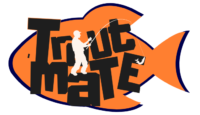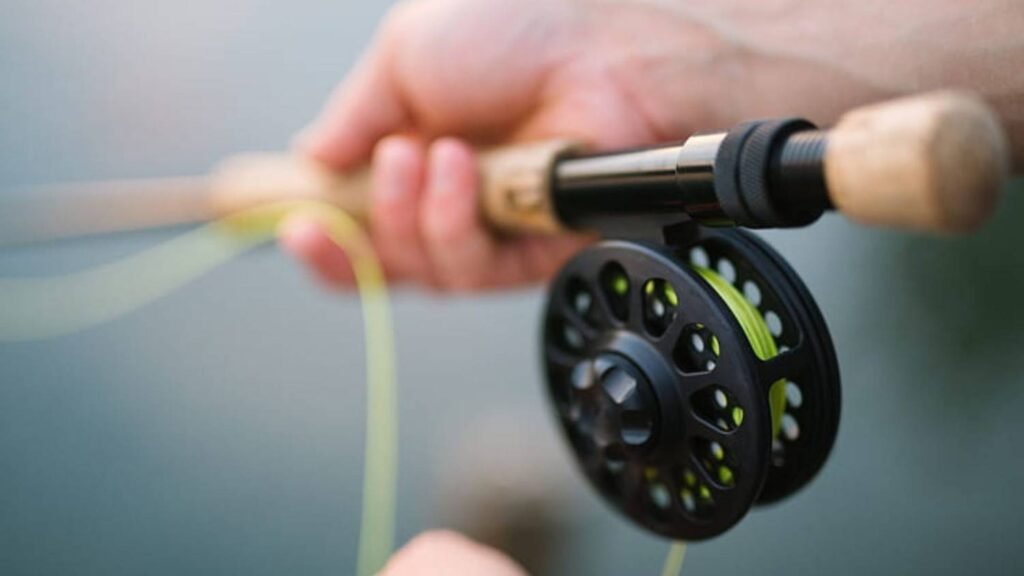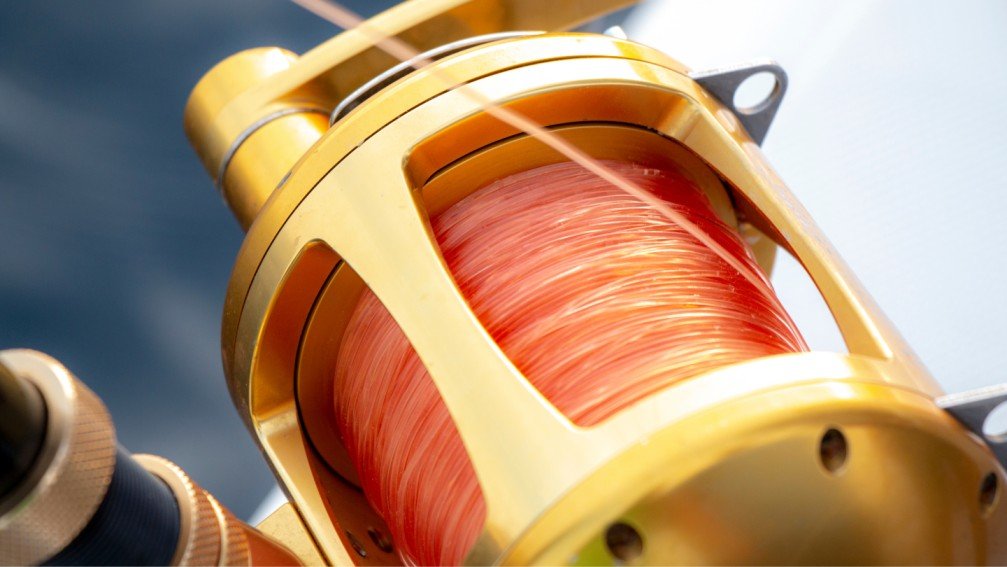Braided fishing lines are stronger and more durable. Monofilament lines are more flexible and easier to handle.
Braided and monofilament fishing lines are the two most popular types used by anglers. Braided lines are made from several strands of material woven together, providing high strength and abrasion resistance. Monofilament lines consist of a single strand of nylon, making them more flexible and easier to knot.
Each type has its own advantages and is suited to different fishing conditions. Braided lines are ideal for heavy cover and deep-water fishing, while monofilament lines excel in clear water and finesse presentations. Understanding these differences helps anglers choose the right line for their specific needs and improve their fishing success.
Introduction To Fishing Lines
Fishing lines are essential for any angler. They connect the angler to the fish. Understanding different types of fishing lines is crucial. This knowledge can improve your fishing experience.
Types Of Fishing Lines
There are several types of fishing lines. The most common are:
- Braided Fishing Line: Made from woven fibers. Strong and durable.
- Monofilament Fishing Line: Made from a single strand of material. Flexible and versatile.
- Fluorocarbon Fishing Line: Nearly invisible underwater. Resistant to abrasion.
Each type has unique properties. Choosing the right one depends on your needs.
Importance Of Choosing The Right Line
Choosing the right line is vital. It affects your success in fishing. The right line can help you catch more fish. It can also prevent line breaks.
Consider these factors:
- Strength: Different lines have different strength levels.
- Visibility: Some lines are more visible underwater.
- Flexibility: Flexible lines are easier to handle.
Understanding these factors helps you make better choices.
Braided Fishing Line
Braided fishing line has gained popularity among anglers for its durability and strength. It is often preferred for its ability to handle heavy loads and withstand tough conditions.
Material And Construction
Braided fishing line is made from synthetic fibers. These fibers are woven together to form a single line. Common materials include Dyneema and Spectra.
The construction involves multiple strands braided together. This creates a thin, yet strong line. Braided lines often have a smaller diameter than monofilament.
Strengths And Weaknesses
| Strengths | Weaknesses |
|---|---|
|
|
Braided fishing line excels in strength and durability. Its low stretch offers better sensitivity for detecting bites. However, it is more visible in water, potentially spooking fish.
Choosing braided line involves balancing its strengths with its weaknesses. Understanding these factors helps in selecting the right fishing line for your needs.

RUNCL PowerBraid Fishing Line
Monofilament Fishing Line
The monofilament fishing line is a favorite among anglers. It’s known for its versatility and ease of use. Let’s dive deeper into what makes this type of fishing line stand out.
Material And Composition
Monofilament fishing line is made from a single fiber of plastic. This plastic is usually nylon. It is extruded in one continuous strand. The result is a smooth and uniform line.
The diameter of monofilament can vary. It affects the line’s strength and stretch. Thicker lines are stronger but less flexible. Thinner lines are more sensitive but can break easily.
Pros And Cons
| Pros | Cons |
|---|---|
|
|
Force Monofilament Fishing Line
Comparative Analysis
Fishing enthusiasts often find themselves choosing between braided and monofilament fishing lines. Each type has unique features. Understanding these differences helps make an informed decision. Here’s a comparative analysis of both types of fishing lines.
Durability And Longevity
Braided fishing lines are known for their impressive durability. They are made from synthetic fibers, making them resistant to wear and tear. These lines last longer, even under harsh conditions.
Monofilament lines have a shorter lifespan. They are made from a single strand of nylon. Over time, exposure to UV light and water weakens them. These lines require more frequent replacement.
Stretch And Sensitivity
Braided lines offer minimal stretch. This feature makes them highly sensitive to bites. Anglers feel even the slightest nibble, improving their reaction time.
Monofilament lines have a lot of stretch. This can absorb shocks from fish fights. However, it reduces sensitivity, making it harder to detect subtle bites.
Performance In Different Environments
Choosing the right fishing line can make a big difference. Each type of line performs differently in various environments. Let’s explore how braided and monofilament fishing lines perform under different conditions.
Freshwater Vs. Saltwater
Freshwater fishing often involves lakes, rivers, and streams. Here, monofilament lines work well. They are more flexible and less visible in clear water. Braided lines are also used but are more visible.
In saltwater fishing, conditions are harsher. Saltwater can damage lines faster. Braided lines are stronger and more durable. They resist abrasion from rough surfaces and saltwater corrosion better than monofilament lines. For more insights into why saltwater fishing offers unique advantages, check out our article on Why is Saltwater Fishing Better Than Freshwater: Top 7 Reasons.
Temperature And Weather Conditions
Temperature affects fishing line performance. In cold weather, monofilament lines can become stiff and brittle. This can make casting difficult. Braided lines remain flexible even in cold temperatures.
Hot weather can also affect lines. Monofilament lines can weaken and stretch with heat. Braided lines are more resistant to heat and maintain their strength.
Weather conditions like wind and rain also play a role. Braided lines cast better in windy conditions due to their thinner diameter. Monofilament lines can absorb water, making them heavier and harder to cast in the rain.
| Environment | Braided Line | Monofilament Line |
|---|---|---|
| Freshwater | Visible, Strong | Less visible, Flexible |
| Saltwater | Durable, Abrasion-resistant | Less durable, Affected by salt |
| Cold Weather | Remains flexible | Stiff, Brittle |
| Hot Weather | Heat-resistant | Weakens, Stretches |
| Windy Conditions | Casts better | Harder to cast |
| Rainy Conditions | Maintains weight | Absorbs water, Heavier |
Suitability For Various Fishing Techniques
Choosing the right fishing line is crucial for success. Braided and monofilament lines each have unique advantages. Understanding their suitability for different techniques can improve your fishing experience.
Casting Distance And Accuracy
Braided fishing line offers superior casting distance due to its thinner diameter. This allows anglers to cast farther with less effort. The low stretch of braided line enhances casting accuracy, providing more control over lure placement.
Monofilament fishing line, while thicker, offers better shock absorption. This can be useful for techniques requiring a bit more give. Though it doesn’t cast as far as braided line, it’s more forgiving and easier to handle.
Fishing For Different Species
For targeting large, aggressive species like bass or pike, braided line is ideal. Its high strength and sensitivity help in detecting bites and setting hooks.
Monofilament line excels in freshwater fishing for species like trout or perch. Its ability to stretch makes it less likely to snap, accommodating the sudden movements of smaller fish.
| Fishing Technique | Braided Line | Monofilament Line |
|---|---|---|
| Long Casting | Excellent | Good |
| Saltwater Fishing | Excellent | Moderate |
| Freshwater Fishing | Good | Excellent |
| Fishing for Large Species | Excellent | Good |
| Fishing for Small Species | Good | Excellent |
Expert Recommendations
Choosing between braided and monofilament fishing lines can be tricky. Each type has unique features that make it suitable for specific situations. Experts recommend using each line type based on fishing conditions and target species. Below, you’ll find detailed expert advice on when to use each type of line.
When To Use Braided Line
Braided lines are known for their strength and durability. Here are some situations where experts suggest using braided fishing line:
- Heavy Cover: Braided lines cut through thick vegetation. This makes them ideal for fishing in heavy cover.
- Deep Water: Braided lines have low stretch. This allows for better sensitivity in deep water.
- Big Fish: The high strength of braided lines makes them perfect for catching large fish species.
| Scenario | Reason for Braided Line |
|---|---|
| Fishing in heavy vegetation | Cut through thick cover |
| Deep water fishing | Better sensitivity and low stretch |
| Targeting large fish | High strength and durability |
When To Use Monofilament Line
Monofilament lines offer flexibility and ease of use. Experts recommend monofilament lines in these situations:
- Topwater Lures: Monofilament lines float. This makes them great for topwater fishing.
- Clear Water: Monofilament lines are less visible underwater. This benefits fishing in clear water.
- Beginner Anglers: The ease of handling makes monofilament ideal for beginners.
| Scenario | Reason for Monofilament Line |
|---|---|
| Topwater lure fishing | Floating line |
| Clear water fishing | Less visible underwater |
| For beginners | Easy to handle |
Maintenance And Care
Maintaining your fishing line can be simple with the right care. Whether using braided or monofilament line, proper upkeep ensures better performance and longer lifespan. Let’s explore essential tips for both types of lines under two subheadings.
Proper Storage
Storing your fishing line correctly prevents damage and extends its usability. Always store lines in a cool, dry place away from direct sunlight. Sunlight can weaken the line over time, reducing its strength.
For braided fishing line, avoid storing it in areas with high humidity. Humidity can cause the line to mold or mildew. Use a line spooler to keep the line tight and tangle-free.
Monofilament fishing line is more sensitive to UV light. Store it in opaque containers or wrap it in a dark cloth. This will protect it from UV damage, ensuring it lasts longer.
Tips For Extending Lifespan
Extending the lifespan of your fishing line involves regular checks and simple maintenance steps:
- Inspect regularly: Check for nicks, abrasions, and weak spots before each use.
- Rinse after use: Especially after saltwater fishing, rinse the line with fresh water.
- Re-spool periodically: Over time, lines can develop memory or become twisted. Re-spool to maintain smooth casting.
- Avoid chemicals: Keep the line away from harsh chemicals, which can degrade its material.
For braided lines, use a line conditioner spray to keep the fibres smooth and flexible. This reduces friction and extends its life.
For monofilament lines, stretch the line gently before use. This helps to reduce memory and improve casting performance.
Following these simple tips ensures your fishing line remains reliable and effective for your fishing adventures.
Difference Between Flurocarbon And Monofilament Fishing Line
Choosing between braided and monofilament fishing line depends on your needs and fishing style. Braided lines offer strength and sensitivity. Monofilament lines provide flexibility and versatility. Assess your fishing environment to make the best choice. Understanding their differences can enhance your fishing experience and improve your success rate.
FAQs:
Which Is Better, Mono Or Braided Fishing Line?
Braided fishing line offers superior strength and sensitivity. Mono fishing line is more affordable and has better stretch. Choose based on your fishing needs.
When Should You Not Use Braided Fishing Line?
Avoid using braided fishing lines in clear water. It’s highly visible and can spook fish. It’s also unsuitable for rocky areas, as it frays easily. For topwater lures, it may hinder proper action. Braided line can damage some rod guides, so check compatibility.
What Is Monofilament Fishing Line Good For?
Monofilament fishing line is good for freshwater and saltwater fishing. It offers excellent knot strength, flexibility, and abrasion resistance. It’s ideal for topwater lures and has low visibility in water.
Is 10lb Braid The Same As 10lb Mono?
No, 10lb braid is not the same as a 10lb mono. Braid is thinner and stronger, while mono is thicker and has more stretch.






